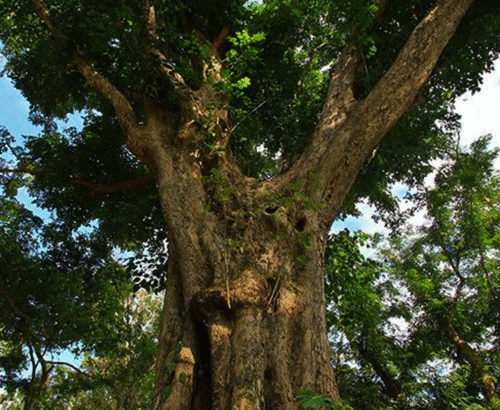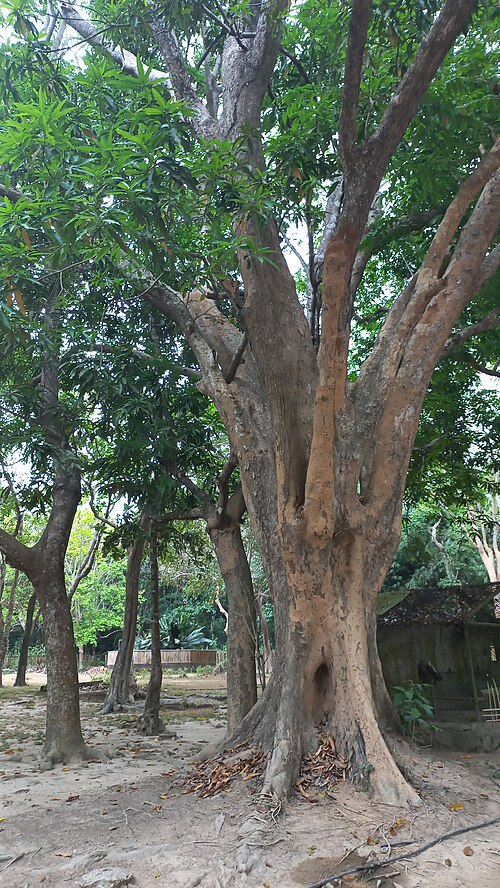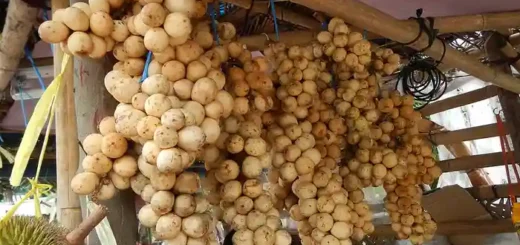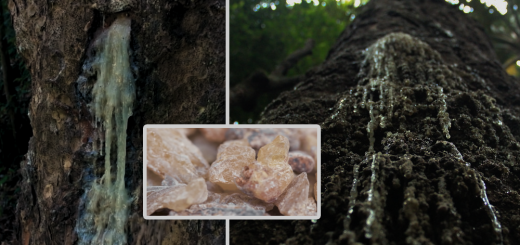Narra Tree – A Timeless Symbol of Strength and Beauty

When you walk through the forests of Southeast Asia, particularly in the Philippines, there’s a good chance you’ll come across a towering, majestic tree with golden yellow flowers and a rich, reddish wood, this is the Narra Tree (scientific name: Pterocarpus indicus). Often considered a symbol of strength, resilience, and heritage, the Narra tree is more than just a beautiful part of the landscape, it’s deeply rooted in culture, history, and ecology.

Narra Tree in Calauit, Palawan Creative Commons | Author: Paul Christian B. Yang-ed – Source: https://commons.wikimedia.org/wiki/File:Puno_ng_Narra_sa_Calauit,_Busuanga.jpg
What is the Narra Tree?
The Narra is a large, deciduous tree native to Southeast Asia, including countries like the Philippines, Indonesia, Malaysia, and parts of the Pacific Islands. It can grow up to 30-40 meters tall, with a wide, spreading canopy that provides generous shade. Its flowers are small but striking, bright yellow and fragrant, blooming in clusters that make the tree glow during flowering season.
But what really makes the Narra stand out is its wood. Known for its durability, resistance to termites, and deep, rich color, Narra wood has been used for centuries in furniture-making, flooring, and even sculpture. It’s considered one of the finest hardwoods in Asia.
Cultural and Historical Importance
In the Philippines, the Narra tree holds a special place, it was declared the national tree in 1934. Its symbolism is powerful: it represents strength, nobility, and the Filipino people’s deep roots and enduring spirit. You’ll often find it featured in artworks, literature, and traditional crafts.
Historically, Narra wood was used to build colonial churches, ancestral homes, and government buildings because of its strength and elegance. Today, it’s still considered a luxury material, though efforts are being made to protect the tree from overharvesting.

Flower stalk arrangement of Pterocarpus indicus in Kinmen, Fuchien Province, Republic of China – Creative Commons | Author: Ping an Chang – Source: https://commons.wikimedia.org/wiki/File:%E5%8D%B0%E5%BA%A6%E7%B4%AB%E6%AA%80_Pterocarpus_indicus_20200807191221_09.jpg
Ecological Role
Beyond its cultural significance, the Narra tree plays an important role in the environment:
Soil enrichment – As a leguminous plant, it helps fix nitrogen in the soil, making it more fertile.
Wildlife support – Its canopy provides shelter for birds, and its flowers attract bees and other pollinators.
Erosion control – Its wide root system helps stabilize the soil, especially in mountainous or hilly areas.
Conservation Efforts
Due to deforestation and the high demand for its valuable wood, the Narra tree has become vulnerable in some areas. Several countries have placed it under protection, and sustainable harvesting practices are being promoted. Reforestation programs are also helping reintroduce Narra in forests and urban landscapes.
A Viving Symbol of Heritages
The Narra tree isn’t just a tree, it’s a living symbol of heritage, resilience, and the natural beauty of Southeast Asia. Whether it’s standing tall in a forest or featured in a handcrafted piece of furniture, it carries with it centuries of history and a promise of sustainability for the future.
So the next time you see a Narra, take a moment to appreciate not just its shade or its flowers, but everything it stands for, because this tree has stories to tell.
References:
https://en.wikipedia.org/wiki/Pterocarpus_indicus










